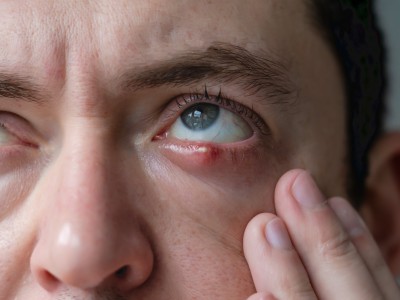
Why do styes appear?
17 July 2025
Styes are a common eyelid inflammation that can be quite uncomfortable. They usually appear as a small red bump, similar to a pimple, typically near the eyelashes. While they are not usually serious, it's important to understand why they occur and how we can prevent them.
A stye (external or internal) is a localized infection, most often caused by the bacteria Staphylococcus aureus. This infection affects the sebaceous glands of the eyelid, specifically:
-
External stye: forms at the base of an eyelash, where the glands of Zeiss or Moll are located.
-
Internal stye: develops inside the eyelid, in the Meibomian glands.
Both types cause redness, swelling, pain, and sometimes tearing or sensitivity to light.
Most common causes:
- Poor eyelid hygiene. Touching your eyes with dirty hands, sleeping with eye makeup on, or not properly cleaning contact lenses can allow bacteria to enter.
- Blepharitis. This is a chronic inflammation of the eyelid margins, which increases the risk of blocked glands and stye formation.
- Excessive or contaminated makeup use. Sharing makeup, using expired products, or not properly removing eye makeup can promote bacterial growth.
- Touching or rubbing your eyes frequently. This can transfer bacteria directly to the eyelids, especially if hands are not clean.
- Stress or low immunity. A weakened immune system can make the body more vulnerable to infections, including styes.
- Dermatological conditions. Conditions like rosacea or seborrheic dermatitis may increase the likelihood of developing styes.
How can they be prevented?
-
Maintain good hygiene of the eyelids and hands.
-
Avoid rubbing your eyes.
-
Use hypoallergenic makeup and replace it every 3–6 months.
-
Do not share eye products.
-
Clean contact lenses and their cases regularly.
-
Consult a specialist if you have chronic blepharitis.
Although most styes go away within a few days with warm compresses, if the bump grows, the pain increases, or it lasts more than a week, it’s important to see an ophthalmologist. Medical attention is also recommended if styes occur frequently, as this could be a sign of an underlying condition.











